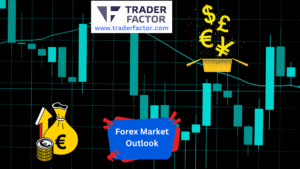The financial markets are at a critical juncture as developments surrounding US-China trade talks and a series of key economic reports dominate investor focus. The recently concluded trade discussions in Geneva offer fresh optimism, while upcoming Consumer Price Index (CPI) and Producer Price Index (PPI) releases will shed light on inflation dynamics. Additionally, statements from Federal Reserve Chair Powell and other central bank officials throughout the week are set to provide crucial guidance. With market sentiment closely tied to these factors, investors are actively navigating forex, equities, and commodities to position for potential outcomes.
Table of Contents
ToggleBackground on the US-China Trade Stalemate
The US-China trade relations entered a deadlock following President Trump’s decision to impose sweeping 145% tariffs on Chinese imports in April 2025. This move, deemed necessary to address trade imbalances, led to a swift response from Beijing, which enacted 125% duties on American goods. The resulting escalation disrupted bilateral trade, with US imports from China plummeting by 60%. The tariffs also triggered inflationary pressures as US consumers faced higher costs for essential goods, while Chinese exporters grappled with lower demand. These developments significantly weighed on global economic activity and sparked renewed urgency to resolve the dispute.
The severity of the tariff measures was evident in trade flow data. According to industry estimates, imports from China plunged to historic lows, sparking fears of prolonged supply chain disruptions. The adverse effects extended beyond the two economies, influencing global markets. The heightened tensions caused sharp declines in equity indices and shifts in currency valuations, reflecting fears of a broader economic slowdown. Despite these challenges, both nations resumed talks this month, signaling intention to de-escalate. The market is now monitoring the evolving dynamic between these major trading partners for signs of stabilization.
Optimism on Trade Talks
Recent trade discussions between the US and China in Geneva have rekindled hopes of an eventual resolution. Officials from both countries described the talks as productive, culminating in the agreement to establish a new trade consultation mechanism. This platform is expected to address key unresolved issues, such as tariff reductions and broader regulatory harmonization. Both sides emphasized the need to rebuild trust and foster more balanced economic relations as a foundation for mutual prosperity. While the details of the agreement remain sparse, the market reacted positively, reflecting cautious confidence in the outcome.
The renewed focus on collaboration comes at a time when both economies are under strain. China’s export-driven industries have faced significant contraction, while the US has struggled with persistent inflationary pressures. Against this backdrop, the Geneva talks mark a crucial step toward resolving differences and boosting global trade flows. However, analysts note that any meaningful impact will depend on the implementation of the proposed measures. For now, investors are welcoming this development as a potential turning point, with financial markets showing increased appetite for risk assets and reduced demand for traditional safe havens.
Market Opening Today
Financial markets opened the week on a positive note, reflecting optimism over trade negotiations and upcoming economic reports. The US Dollar Index (DXY) traded at 100.59, marking a modest 0.02% gain from the previous session. Gold prices, meanwhile, slipped to $3,277.57 per ounce, down 1.41%, as reduced demand for safe-haven assets signaled improving market sentiment. Forex markets saw varied movements, with the euro-dollar pair (EUR/USD) down 0.29% at 1.1252 and the pound-dollar (GBP/USD) lower at 1.3287. Conversely, the Australian dollar strengthened, rising to 0.6433 against the US dollar.
Equity markets reflected significant bullish sentiment. The Nasdaq 100 rose to 20,531.75, gaining 1.96%. The S&P 500 followed, increasing 1.46% to 5,761.00, while the Dow Jones Industrial Average advanced 1.10%, closing at 41,776. Bitcoin posted an extraordinary rally, trading at $103,931. Its price surge underscores strong investor confidence in cryptocurrencies amid easing trade tensions. These developments reveal a shift in market sentiment as investors reassess risks and position for a recovery in global trade flows. Continued progress in trade relations and macroeconomic clarity could further drive these trends.
Key Events This Week
UK Labor Market Reports
On Tuesday, the UK will release its Claimant Count Change and Average Earnings Index for the previous month. The Claimant Count Change reveals the number of people applying for unemployment benefits, providing a gauge of employment conditions. A lower claimant count suggests a healthier labor market, which is often supportive of the British pound. Meanwhile, the Average Earnings Index measures wage growth over a three-month period. Rising wages typically indicate increased consumer spending power, but they can also elevate inflationary pressures, prompting potential action from the Bank of England (BoE). Markets will closely monitor these indicators for hints about economic resilience.
These reports come at a time when the UK economy faces headwinds from slower growth and elevated inflation. Last week, the BoE lowered interest rates in response to declining economic activity. If the labor market shows unexpected strength, it could renew hawkish expectations for monetary policy adjustments. Conversely, weaker figures may compound concerns of a sluggish recovery. GBP/USD may see heightened volatility as traders weigh the potential impacts of the data. Combined, the labor reports represent a critical snapshot of the UK’s economic health and its trajectory in this challenging macroeconomic environment.
Germany’s ZEW Economic Sentiment Index
Tuesday will also feature the release of Germany’s ZEW Economic Sentiment Index, a leading indicator of investor confidence in the Eurozone’s largest economy. The index reflects the level of economic optimism among institutional investors and analysts for the next six months. A higher-than-expected reading would suggest improving sentiment and potential economic stability, which could bolster the euro. However, a lower figure could amplify concerns about a prolonged slowdown in the Eurozone, particularly as high energy costs and geopolitical tensions weigh on growth prospects.
This report is particularly significant because it provides an early signal of broader economic trends across the Eurozone. With Germany’s manufacturing sector struggling to recover and export volumes under pressure, market participants will be keenly watching whether sentiment aligns with signs of stabilization. If the ZEW Index shows positive momentum, EUR/USD could stage a recovery from its recent losses. Conversely, a soft reading may deepen bearish sentiment, particularly if external challenges like weaker global demand persist.
US Consumer Price Index (CPI)
One of the most anticipated reports this week is the US Consumer Price Index (CPI), scheduled for release on Tuesday during the New York session. The CPI, which measures changes in consumer goods and services prices, holds critical importance as the Federal Reserve evaluates inflation trends. The Fed aims to maintain an annual inflation target of 2%, using the CPI as one of its key gauges. Markets anticipate that the CPI outcome will inform future rate decisions, with higher-than-expected inflation potentially justifying more hawkish monetary measures.
The CPI is likely to have direct implications on the US dollar and bond yields. Should the numbers show a deceleration in price growth, it could signal that the Fed’s tightening measures are working, which might weigh on the dollar. Conversely, an uptick in inflation could reignite concerns about rising consumer costs, strengthening the dollar as interest rate hikes become more probable. With inflation remaining a central issue for the US economy, this report will guide market sentiment and trading strategies across asset classes.
Australia’s Wage and Employment Data
Midweek attention will shift to Australia, which will publish its Wage Price Index on Wednesday and its Employment Change and Unemployment Rate on Thursday. The Wage Price Index offers insights into wage inflation, which could signal increased purchasing power for households but also heighten inflation risks. A strong reading might bolster the Australian dollar, as it suggests the Reserve Bank of Australia (RBA) could adopt a more hawkish stance on monetary policy.
Australia’s Employment Change and Unemployment Rate reports will further illuminate the strength of its labor market. A substantial increase in employment or a decrease in unemployment could reinforce optimism about economic resilience. Conversely, weaker job figures might raise concerns about slowing growth. Markets are likely to react to these data points as the Australian economy navigates external challenges, including uncertainty in China, its largest trading partner.
Thursday’s Key US Economic Reports
Thursday will be a pivotal day for US markets, as a suite of economic reports is expected to provide deeper insights into inflation and consumer behavior. The Producer Price Index (PPI) will highlight changes in input costs at the production level, serving as a precursor to consumer inflation trends. A higher PPI could indicate persisting inflationary pressures, potentially boosting the dollar. Retail sales data will complement the analysis, revealing consumer spending activity. Strong retail numbers would suggest economic resilience, while weaker figures could amplify recession fears.
Additionally, weekly initial jobless claims data will offer real-time insight into labor market conditions, with a declining trend indicative of economic stability. Thursday will also see the release of the Empire State Manufacturing Index and the Philly Fed Manufacturing Index, both key measures of regional industrial activity. Federal Reserve Chair Jerome Powell’s speech later in the day will cap a busy session. Markets will be listening closely for any updates on the Fed’s monetary policy outlook, giving Thursday’s events the potential to drive significant market volatility.
Friday’s Key Economic Events
The week will conclude with impactful reports from New Zealand, Switzerland, and the US. New Zealand’s Inflation Expectations report is a key indicator for the Reserve Bank of New Zealand’s (RBNZ) policy trajectory. Higher inflation expectations often prompt tighter monetary policy, providing support for the New Zealand dollar. Switzerland will also take the spotlight as the Swiss National Bank (SNB) Chairman delivers a speech on monetary policy, which could influence the Swiss franc’s movements.
Finally, the University of Michigan (UoM) will release its Consumer Sentiment and Inflation Expectations indices in the US. These reports gauge consumer confidence and inflationary outlooks, both of which have profound implications for market perception and dollar strength. Together, these events will set the tone for the week ahead, wrapping up a crucial period for global markets.
Conclusion
The financial markets are entering a pivotal week dominated by trade and economic developments. Optimism from US-China trade talks, coupled with crucial economic data and central bank guidance, sets the stage for heightened volatility. Investors are balancing risk and reward as they assess the evolving landscape. Continued dialogue and macroeconomic improvements will be key to sustaining the positive momentum.

















